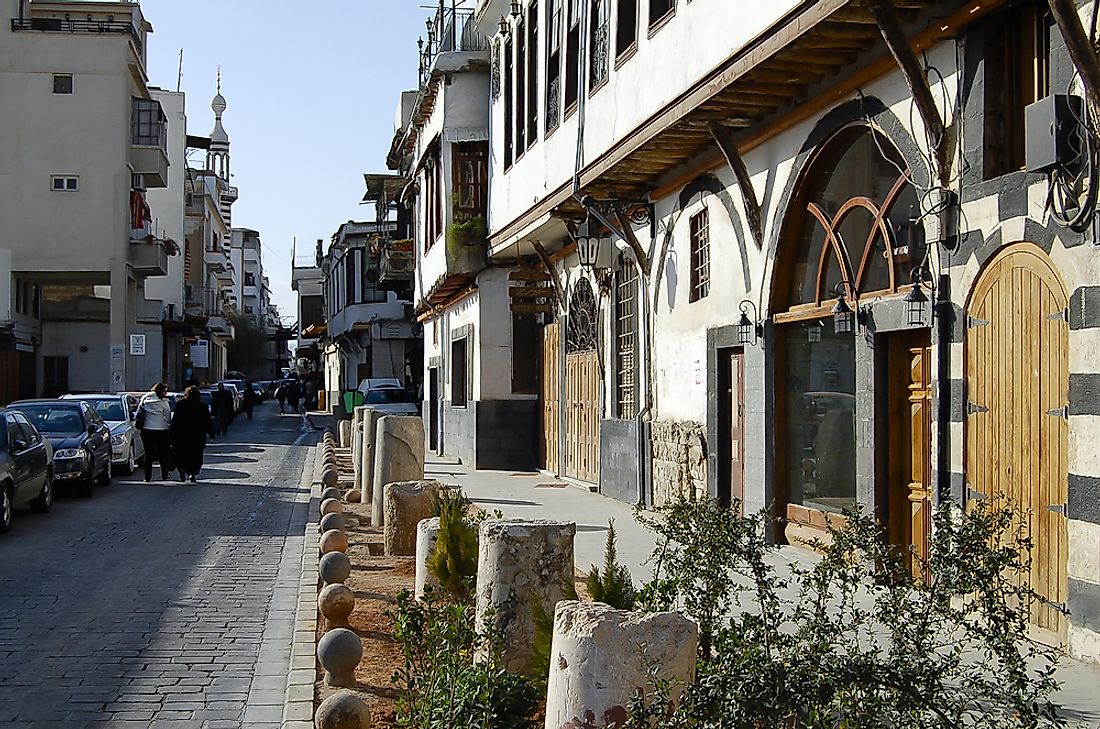What Is The Capital Of Syria?

The capital of Syria is Damascus, which has a population size of around 1.71 million. Researchers believe this population might be growing recently as people are fleeing the ongoing civil war, which is centered in the city of Aleppo. It is located in the southwestern region of the country, at the bottom of the Anti-Lebanon mountain range and along either side of the Barada river. This city covers an area of approximately 41 square miles and, due to its inland location, experiences a semi-arid climate. Damascus is believed to have one of the oldest constantly present human populations in the world, with the first large settlement occurring sometime between 1000 and 2000 BC.
History Of The Capital Of Syria
Damascus became an important political center as the capital of the Aram-Damascus Kingdom around 1100 BC. It later came under Greek and then Roman rule, when it was further developed and incorporated into the Decapolis. By 125 AD, Damascus was considered a major metropolitan center. In 634, this city entered its Islamic Arab era, when the Rashidun Caliphate took control. Several forces had control of Damascus over the next thousand years and by the 16th century, the Ottoman Empire stepped in to prevent an alliance between the Persians and the Mamluks.
Damascus remained under the Ottoman rule for approximately 4 centuries, during which the city of Aleppo was more important economically. In the first few years of the 20th century, this city experienced an Arab uprising against the Turkish empire and in 1918, the country named its own king. At the same time that Syria was undergoing a nationalistic movement, the Versaille Convention granted this country to France as a mandate. French troops moved into the area, making Damascus the capital of the mandate. The French held control until 1941 when Syria gained its independence and Damascus remained the capital.
Demographics Of Damascus, The Capital Of Syria
Today, the demographics of Damascus reflects its long, complex history. The current population of 1.7 million refers only to the central urban area. The entire metropolitan area surrounding Damascus has a total population of around 5 million, a significant increase over the population of roughly 140,000 the area had during the 19th century. Over the last few decades, the number of inhabitants here has grown for several reasons, including rural to urban migration as families look for more economic and employment opportunities.
The majority of the people living here are of Arab descent, most of whom are believed to have their roots in the Ghassanids and Lakhmids tribes that developed in the southern desert region during the 3rd century AD. The largest ethnic minority in this city is the Kurds, who are made up of around 300,000 individuals.
The most widely practiced religion in Damascus is Islam and Sunni Muslims make up the largest denomination. Other large, yet minority, Islamic denominations include Twelver Shia and Alawites. Damascus is also home to the largest woman-led Muslim movement in the world, which is based on Sufism. Christians make up only between 15 and 20% of the population in this city.







